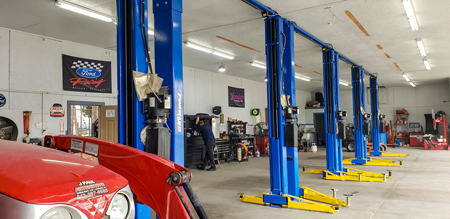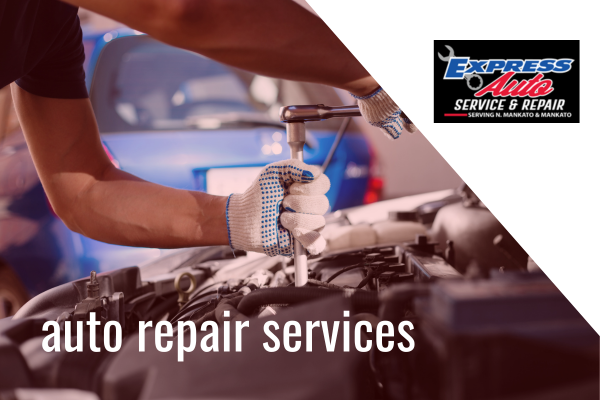All Categories
Featured

[/image]
When it involves lorry upkeep, tires are commonly among the most overlooked components, despite the fact that they play an essential function in the safety and effectiveness of your auto. Tire rotation and placement are 2 vital services that assist ensure your tires wear evenly, last much longer, and continue to do at their ideal. Right here's everything you need to understand about tire turning and positioning and why they matter for your lorry.
What Is Tire Rotation? Tire rotation is the process of moving the tires from one setting to another to ensure even put on throughout all four tires. The front and rear tires of a car wear at various prices because of the weight circulation and the reality that the front tires take care of both guiding and braking. By turning the tires consistently, commonly every 6,000 to 8,000 miles, you can balance out the wear and prolong the life of your tires.
In many lorries, the tires will certainly be rotated from front to back, and in some instances, side-to-side, relying on the tire kind and your car's specs. This makes certain that each tire births an equal quantity of tension and pressure. Regular tire rotations additionally enhance vehicle handling and ride quality, in addition to add to better fuel efficiency.
What Is Tire Alignment? Tire positioning refers to readjusting the angles of your vehicle's wheels to guarantee they are positioned appropriately according to the supplier's specs. Correct positioning makes certain that your tires are identical to one an additional and vertical to the ground, which helps boost the total handling, security, and lifespan of your tires.
There are three key aspects of placement:
Camber: The tilt of the wheels when seen from the front. If the wheels lean inward or outside, it can cause uneven tire wear. Caster: The angle of the guiding axis when watched from the side. Appropriate caster alignment makes certain steady steering and better automobile control. Toe: The angle at which the tires direct inward or exterior when watched from above. Wrong toe placement can trigger tires to wear erratically and affect handling. Imbalance can take place because of aspects like hitting pockets, aesthetics, or driving over rough terrain, and even normal driving over time can gradually trigger imbalance. Getting a placement check every 1-2 years or when you discover dealing with problems is crucial for ideal tire performance.
Why Are Tire Rotation and Alignment Important? Maximized Tire Life:. Tire turning guarantees even wear across all 4 tires, stopping early tire substitute. Misaligned tires wear unevenly, which can result in the need for even more constant tire replacements. Both tire rotation and positioning raise the life expectancy of your tires, saving you money in the future.
Improved Safety And Security:. Correct placement aids keep your car tracking straight, boosting stability and handling. Misaligned tires can result in pulling, that makes it more difficult to manage your car, particularly at broadband or in emergency situation scenarios. Tire rotation also guarantees your car's handling continues to be constant, enhancing your capacity to quit rapidly and maintain control.
Better Fuel Performance:. When your tires are effectively lined up, they experience much less moving resistance, indicating your engine does not need to work as hard to move the auto. This decreases gas consumption and enhances gas mileage. Imbalance can trigger your tires to drag, causing bad fuel efficiency.
Smoother Ride:. Misaligned or unevenly worn tires can cause resonances in the guiding wheel or vehicle body, which can be awkward while driving. Normal tire rotation and positioning can offer a smoother and quieter ride, minimizing unnecessary noise and vibrations.
Signs You Need Tire Rotation or Positioning. It is necessary to be familiar with alerting signs that your tires could need attention. Watch out for:
Uneven Tire Put On: If you observe that a person tire is extra worn than others, it can be an indication that it's time for a turning or alignment. Steering Drawing away: If your vehicle pulls to one side, especially when you're driving straight, it can show imbalance. Resonances or Uncommon Noises: If your wheel drinks or you hear a humming or whining noise, your placement may be off. Squealing Tires: A high-pitched squeal can indicate imbalance or that your tires are used unevenly. If you observe any one of these indicators, it's a great concept to have your car examined as soon as feasible to stop further damages to your tires or shock absorber.
Exactly How Usually Should You Revolve and Align Your Tires? Tire rotation is usually advised every 6,000 to 8,000 miles or every six months, relying on your cars and truck's manual and driving conditions. It's additionally a great idea to turn your tires throughout oil changes to ensure they obtain the interest they require.
For alignment, a lot of specialists suggest having your tires straightened when a year or if you see any managing concerns. If you have actually just recently struck a fracture, curb, or another obstacle, it's a great idea to have your positioning examined sooner to avoid uneven tire wear.

Conclusion: Keep Your Tires for Long Life and Security. Tire turning and positioning are easy yet important facets of automobile upkeep that add to longer tire life, enhanced security, and far better gas effectiveness. By complying with the advised service periods for tire turning and alignment, you can guarantee your tires remain in leading condition, providing a smoother and safer driving experience. Routine upkeep assists you prevent unforeseen tire wear, costly fixings, and prospective crashes, making it a smart financial investment for your auto's overall efficiency.
Latest Posts
The Benefits of Routine Vehicle Maintenance at Montclare Auto Repair Saves You Money
Choosing the Right Roofing Color: Influence On Power Effectiveness
Boost Your Home's Outside with Weathercraft's House siding Solutions
More
Latest Posts
The Benefits of Routine Vehicle Maintenance at Montclare Auto Repair Saves You Money
Choosing the Right Roofing Color: Influence On Power Effectiveness
Boost Your Home's Outside with Weathercraft's House siding Solutions